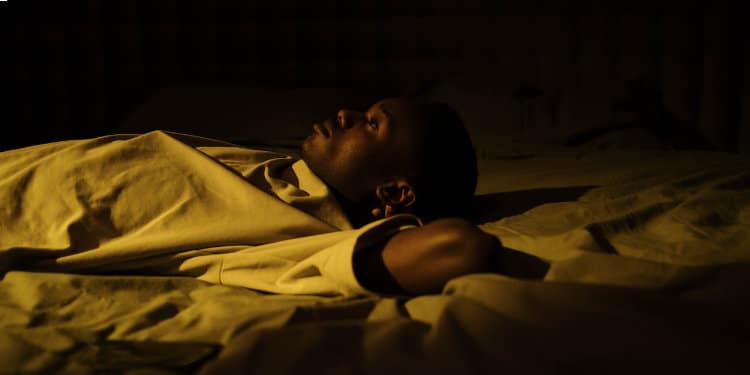








For many moms, staying at home with their children is ideal. Witnessing milestones firsthand, enjoying quality time, and saving on childcare costs are just a few of the benefits. However, stay-at-home parenting isn’t always all that it’s cracked up to be. Research indicates that stay-at-home moms are more likely to experience depressive symptoms, i.e., stay-at-home mom depression, than working mothers.[1]

Particularly for women who deliberately choose to be stay-at-home moms, it may come as a surprise that being home with their kids can lead to depression that, in some cases, may be rather severe. The manifestation of stay-at-home mom depression may be the result of a variety of factors, such as genetics, environment, and emotional issues. It can therefore not be fully predicted in advance.
An important caveat is that some studies suggest that stay-at-home mom depression is typically highest among women who want to work a job outside of the home, but are unable to.[2] Scenarios like this sometimes occur when a woman must stay at home due to the cost of childcare. Since, on average, it costs around $15,000 per year for childcare for an infant, that cost may prove insurmountable for working families without high incomes. In these cases, stay-at-home parenting is less by choice and more by necessity.[3]
Whether a woman who is experiencing stay-at-home mom depression is used to staying at home or is new to the game, the risks remain similar so long as she desires a profession outside of parenting. Some research suggests that it’s not so much about whether a mother works for pay or not, but instead her personal preferences and which translate to her emotional wellness.[2]
Although there is research indicating that stay-at-home mom depression is more common, specifically within women who desire to work, the most prolific research asserts that all stay-at-home moms are vulnerable to this type of depression. According to a Gallup study, working moms feel better and happier than stay-at-home moms.[3]
The study occurred over a decade, and mothers who worked at least part-time consistently reported few depressive symptoms and better overall health. Thus, just because a woman has no desire to work outside of the home does not mean that she is out of the proverbial woods. Even women who have always dreamed of being a stay-at-home mom may fall victim to this type of depression. Like many mental illnesses, stay-at-home mom depression can affect people who may not have been thought to be predisposed.
The signs of stay-at-home mom depression mimic the signs of other forms of depression, with the differentiating indicator being the relationship between the onset of symptoms and when the mother became a SAHM.
Perhaps the strongest symptoms are the feelings of guilt, isolation, worthlessness, and helplessness. For women who are suffering from stay-at-home mom depression, pessimism and hopelessness may plague their days as they resent their circumstances.
It’s important to note that for women suffering from stay-at-home mom depression, their symptoms do not mean that they don’t love their children and their families. Instead, stay-at-home depression should be treated like all forms of depression, without the stigma that a woman is unhappy with her family.
Beyond feelings of worthlessness and hopelessness, mothers experiencing depression from staying at home may also feel fatigued and suffer from insomnia. These sleep disturbances greatly worsen a patient’s circumstances and further exacerbate the symptoms of stay-at-home depression. Other symptoms include difficulty concentrating and remembering details, as well as overeating or appetite loss.
While no symptoms of depression are pleasant, some of them are particularly harrowing. Mothers experiencing depression may feel continuous feelings of sadness, anxiety, and may even feel “empty.” In many cases, women lose interest in things they once loved.
The dangers of these strong depressive symptoms are that they may lead to suicidal thoughts, or worse, suicide attempts. Due to these risks, treatment should be sought out immediately. If someone experiencing these symptoms does not feel inclined to pursue treatment, a friend or family member should encourage them to do so.
The short answer? No. But once again, the long answer is incredibly complex. While postpartum depression and stay-at-home mom depression may be comorbid, that isn’t inherently the case, and the two can be mutually exclusive.[4]
Postpartum depression develops after a woman gives birth, starting anywhere from a few weeks after delivery to a year after birth. When untreated, postpartum depression can last for months.
Conversely, stay-at-home depression develops while a woman is staying home, raising a child. Not every woman with SAHM depression is also a sufferer of postpartum depression. Additionally, stay-at-home depression can occur years after birth (given that a mother can choose to stay at home and raise children at any point in the child’s life). Due to the aforementioned circumstances as well as the variety of individualized factors, it’s important to note that the two forms of depression are not the same and do not necessarily co-occur within a patient.
However, the most likely form of comorbidity between postpartum depression and stay-at-home mom depression exists within women who were already at risk. People who are predisposed to depression may experience it in multiple forms and during multiple life stages. While it is possible to experience both postpartum and stay-at-home mom depression, they are not the same, and one can exist exclusive of the other.
Although this article has primarily addressed stay-at-home mom depression, stay-at-home dads can experience this as well. The number of fathers who stay at home with their children has been on the rise for years, and thus, the number of fathers with stay-at-home dad depression has risen as well.[5]
Men are not exempt from experiencing any form of depression, and stay-at-home-parent depression is no different. Perhaps the main difference between stay-at-home mom and stay-at-home dad depression has nothing to do with symptoms at all. Stay-at-home dad depression, much like all forms of mental illness, is attached to stigma. Men continue to face judgment for having mental illness, primarily due to social conditioning and gender roles. This social conditioning may further exacerbate depression symptoms, as men may feel inadequate for not working outside of the home, even if they willingly decided to be the stay-at-home parent. Additionally, the pressure to mask symptoms and avoid seeking help may also contribute to the worsening of symptoms in dads struggling with depression.[6]
Beyond the stereotypes that often label men as “weak” for struggling with depression, the conditions are similar regardless of gender. No matter if the person suffering from stay-at-home parent depression is a man or a woman, the symptoms, risks, and treatment methods often mimic one another.
Depression doesn’t manifest itself uniformly, and the same is true specifically for depression in stay-at-home moms. While the overall condition totes a general array of symptoms, the actual symptoms present in a stay-at-home mother may vary from person to person. For example, a person may experience the feeling of hopelessness and their appetite may change, but they may not experience sleep disturbances.
As a result, an experienced healthcare practitioner can work with someone believed to be struggling with stay-at-home mom (or dad) depression and treat each patient according to their specific symptoms. The treatments typically include a combination of psychotherapy, medication, and lifestyle changes.
The truth of the matter is that staying at home to raise children is no easy feat. It’s not for everybody, even if it was initially one’s dream to stay at home and raise children. There is no shame in that, and as with any mental illness, treatment is possible.
As greater awareness around the importance of mental health increases, SAHM depression will likely become something parents will discuss more openly. As that happens, the stigma will lessen and treatment methods will improve. If you are worried that you, or someone close to you, is suffering from depression, consult with a professional therapist.
References